As a watercolour beginner, you often find yourself facing the same problems over and over again.
Half the time your paintings don’t look like the beautiful examples that you observed in the YouTube watercolour tutorials.
So, you wonder, “How can I teach myself to watercolour?”
You can teach yourself how to watercolour by learning how to fix the most common watercolour mistakes that you make. Learning how to solve these problems will improve the quality of your paintings and reduce the chances that you’ll make the same errors in the future.
By the time you’re done reading, you’ll understand that it’s actully quite easy to improve your watercolour paintings and become a better painter.
DISCLOSURE: This post contains affiliate links. If you make a qualified purchase using any of the links, I will earn a small commission at no extra cost to you. I appreciate every sale because it supports my mission as well as the continued growth of this website.
Table of Contents
1. You’re Using the Wrong Paper
I’m starting this list off by dropping you a truth bomb because it will save you a lot of stress and frustration.
I’m speaking from experience, so I can’t emphasize this enough:
You must paint on thick, sturdy, and preferably 100% cotton watercolour paper. Otherwise, you’ll likely struggle to paint on the cheaper paper that buckles and can’t absorb lots of water.
When you’re not using the correct type of paper, you’re going to run into a ton of problems such as tearing and warping.
If I had used the right paper when I was a watercolour beginner, I would have saved myself A LOT of frustration and stress.
For this reason, it’s crucial that you take some time to learn about investing in the best watercolour supplies that fit your budget.
The Solution: Watercolour Beginners Should Invest in 100% Cotton Paper
100% cotton paper is the best kind of watercolour paper because it is thick, sturdy, and reliable. It has the right texture and weight to support multiple layers of paint, thus making it ideal for painting.
If you’re using printer or sketching/drawing paper, stop using them immediately! They’re far too fragile to support watercolour paintings.
And avoid using mixed media paper because it’s not thick enough to handle multiple watercolorur washes.
Therefore, invest in 100% cotton paper that is acid free and at least 140lbs or 300gsm, because this is a minimum ideal weight for watercolour painting.
The most popular paper is Arches 100% cotton watercolour paper. It’s high-quality paper and a favourite among watercolour artists.
Arches Cold-Pressed Watercolor Paper
• 100% cotton paper is super water absorbent and ideal for watercolours
• 300 gsm (140 lbs) is thick paper, so it can handle many layers of pigment
• Acid free: Your paper won’t turn yellow
BUY ON AMAZON2. You’re Using The Wrong Brush
This useful piece of watercolour advice makes a world of difference: You need to be use proper watercolour paintbrushes.
I admit that I had no concept of what kind of brush to purchase when I was a watercolour beginner.
For some reason, I thought a range of flat brushes would suffice. Although they were great for laying down washes, it was hard to get precise details with flat brushes.
Moreover, I realized that I didn’t like the long handle of my brushes because they felt too long and uncomfortable in my small hands.
That’s why I recommend the Silver Black Velvet Short Handle Brush Set of 3 because these brushes are high quality and versatile.
It comes with an ideal size 8 round brush, a 3/4 oval brush, and a script liner for detailing.
Silver Black Velvet Watercolour Brushes
• Comes with a size 6 round brush, size 12 round brush, and 1 inch flat brush
• Made from a superior blend of squirrel hair and synthetic fibers
• Fine points, soft bristles, and fibers hold a lot of water
BUY ON AMAZONThe Solution: Invest in Round Brushes
As a watercolour beginner, I recommend that your first brush set follows these guidelines:
- Opt for round brushes instead of flat brushes because they give you more versatility, especially if you’re on a budget.
- Ideally, your set should have a size 6, 8, or 10 brush because this will give you the most brushstroke variation.
- Look for brushes with shorter handles because they might be easier for you to control if you’re not used to handling brushes that are longer in length.
Remember, as a watercolour beginner, you don’t need a big fancy set of brushes. Expand your brush collection as you develop your skills.
3. You’ve Bought A Cheap Paint Set
For a detailed breakdown that covers the pros and cons of student grade versus professional grade paint sets, check out this article about learning to paint with watercolours.
If you’re a watercolour beginner, you don’t need to invest in the most expensive professional paints because you’re likely to waste the paint during the learning stage of your development.
Converely, if anyone advised you to invest in cheap watercolour paint because you’re a beginner, then you’ve been exposed a common watercolour myth.
But why does this matter? Because very cheap paint sets often have too many fillers in the pigments. Basically, that means the paints will appear less transparent and more opaque.
So, the quality of the watercolour paint is lessened because the paints are chalkier in nature, which makes them harder to blend.
The Solution: Invest in Good-Quality Paint
You do not need to invest in a high-end paint set, but don’t settle for a very cheap set either. The difficulties of using such paints might frustrate you and cause you to quit this wonderful hobby.
Instead, you could invest in this popular student grade watercolour set. The Winsor & Newton Cotman Water Colours is a wonderful set that is renowned for it’s affordable price.
Winsor & Newton Cotman Watercolors
• 12 vibrant pigments that blend and mix well together
• Small box that’s lightweight, portable, and convenient to carry
• Very affordable set that’s suitable for all beginners
BUY ON AMAZONAlternatively, you can invest in an affordable professional grade set such as the White Nights Watercolour Set of 36 Whole Pans. The pans are large, and the paint is very smooth and nicely pigmented.
If you would like to see what these White Nights paints look like in a watercolour painting, check out this beautiful purple night sky
In both paintings, you can see how well the colours blend. As well, you can see how many colours I used to create the desired palette.
White Nights Watercolours
• 36 large pans with a diverse range of watercolour pigments
• The vibrant pigments blend easily and have very smooth application
• Box comes with useful and detailed pigment information
BUY ON AMAZON4. You’re Using Too Much Water
As a watercolour beginner, it’s difficult to gauge how much water you should be using in relation to the amount of paint.
Often enough, you use too much water because you intuitively think that a water-based medium should use a lot of water.
Although the logic makes sense, it’s not really true. When you use too much water, you are going to see pools or beads of water on your paper. This makes it difficult to use watercolour techniques such as:
- Wet on wet technique
- Flat wash technique
- Graded wash technique
- Variegated wash technique
Too much water will dilute the paint and make it difficult to control because the water will flow all over your paper. If this happens, you may end up ruining your painting if you aren’t careful.
Related: For more in-depth details on how to use these techniques, refer to popular article 9 Best Watercolour Techniques You Should Know.
The Solution: Practice the Water to Paint Ratio
So, to fix this common watercolour mistake, you need to master water control.
As a watercolour beginner, make sure you lay down a wash that is evenly glossy on the paper. To check if you have the right amount, tilt your paper in the light. If you see an even sheen of water, you’re good.
Now, when you lay down the pigment, don’t load your brush with too much water. Test it on the paper first.
Watercolour beginners often struggle to find the right ratio when they’re first learning. Don’t feel bad if you don’t get it right the first time. Keep practicing, and you’ll notice improvement soon enough!
You can refer to this easy night sky watercolour tutorial for a more detailed explanation on how to apply even coats of water using the wet on wet technique.
If you’d like more information that will help you improve your watercolour techniques, skills, and paintings, make sure you follow me on Pinterest!
5. You’re Not Letting the Layers Dry
Let’s be honest. Raise your hand if you’ve ever been so impatient that you painted over a layer before it was dry, and so you ruined it by creating an ugly mess of muddy colours.
I’m guilty! And chances are, you’ve done this, too.
But that’s okay! Because if we never made mistakes, we would never learn from them. So lets learn how to avoid muddy watercolours by letting layers dry completely.
Related: Check out this monochromatic painting tutorial which stresses the importance of adding multiple layers and waiting for them to dry.
The Solution: Use a Hairdryer/Hand Fan
If you have a hairdryer, turn it on and blow it gently over the wet painting. Be warned, though! Don’t put the setting too high or else the wind might move around the paint and smudge the colours.
You want it to be strong and warm enough to dry the paint, but not so strong that it pushes the water around where you don’t want it to go.
On the other hand, you can use a hand fan to dry your painting, too. It’s an effective solution because the air will dry the paper quickly.
Or, if you’re not bothered by the time it takes to wait for a layer to dry, just practice the virtue of patience. It’s truly one of the best lessons that watercolour can teach us!
While you’re waiting, you can evaluate your painting’s style to determine which stylistic elements you would like to incorporate in the upcoming layers.
6. You’re Not Premixing Enough Paint
As a beginner, I would follow along to free beginner watercolour tutorials when all of a sudden…
…I realized that I hadn’t mixed enough paint to finish my paintings while they were still wet!
Then, I scrambled to reproduce the same colour. In my haste, I would add too much yellow or not enough blue. The green would turn out looking close to my premixed colour, but it just wasn’t the right shade of green.
Watercolour beginners make this mistake all the time. So try to develop a better painting routine so that you don’t run into this issue at the worst possible moment.
After all, no one wants to run out of the perfect pre-mixed colour while they’re painting.
The Solution: Premix Adequate Amounts of Paint
Sometimes, you might worry that you’re going to waste the paint if you don’t end up using it all in your painting.
But think about this. Which is worse?
- Not mixing enough paint, so your values don’t match up when you attempt to mix the exact same colour again.
- Mixing too much paint, but you can use the leftover paint some other time.
I think you’ll agree with me when I say that it’s better to have too much extra paint because you can always use that paint again.
If you want to avoid the disappointment of possibly not creating the same exact shade as before, then just take a few extra minutes to prep your work better.
By preparing your mixing palette in advance, you’re less likely to run out of the right colours while you’re painting.
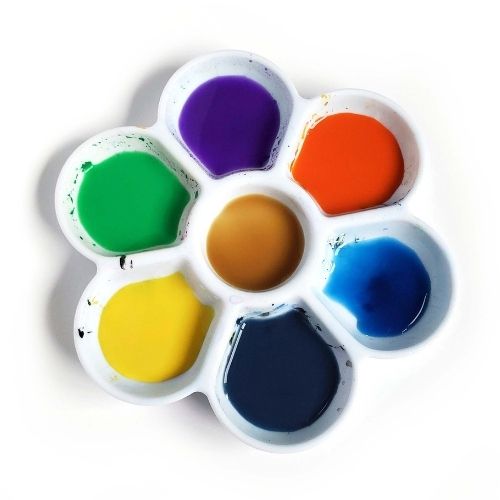
Note: Another problem could be that you haven’t really learned about colour theory. If this is you, check out this article about 8 things about watercolour I wish I had known as a beginner.
7. You’re Overworking Your Painting
As a beginner, there were times when I was doing plein air watercolour painting, only to get frustrated that my landscapes weren’t turning out well.
Eventually, I realized that was because I was overworking my painting without knowing when to stop.
As such, when you’re a watercolour beginner, it can be tough to discern how much is too much when it comes to layering.
In fact, it can be hard to understand how to effectively layer the paints on top of each other because you haven’t yet developed an eye for it.
That’s okay, because as you learn, you begin to understand how your paints layer on top of each other. You begin to see how the transparent layers build up the values.
Note: You must first develop enough awareness to understand when you should stop painting in order to prevent overworking.
The Solution: Less Is More
It’s easy to get carried away with watercolour painting because we like to add more and more to the painting to “make it better.” But often enough, this obsession works in the opposite way.
One way of dealing with perfectionism as an artist is to accept your artwork for what it is by putting down the pencil or paintbrush before you start overworking it.
To prevent this, there are a few mindful actions that you can practice:
- First, step away from the painting and evaluate it as it dries. Consider whether you really need to add more layers or not.
- Second, don’t brush the paper too hard with your brush. Not only is this not good for the bristles, but over-scrubbing can tear the paper.
- Keep in mind that less is more. Adding more details, paint, and textures won’t necessarily improve the painting. Watercolour is, after all, a loose medium.
The next time you paint, keep these tips in mind and catch yourself before you start overworking your painting.
Conclusion
If you’ve made it this far, give yourself a pat on the back!
As a watercolour beginner, you’ have now identified several mistakes you might be making in your art. But you’ve also learned about solutions that will help you avoid these mistakes in the future!
Just remember:
Improvement takes time, so don’t expect to change these habits over night if you’ve been making these mistakes for a while.
As explained in this article by Solving Watercolor, if you can get into the habit of preventing these mistakes from occurring in the first place, you’ll enjoy even more success.
As long as you take the time to improve your watercolour habits, you’ll eventually develop better habits and routines.
Have you made any of these mistakes as a watercolour beginner? Share your experience in the comments below!
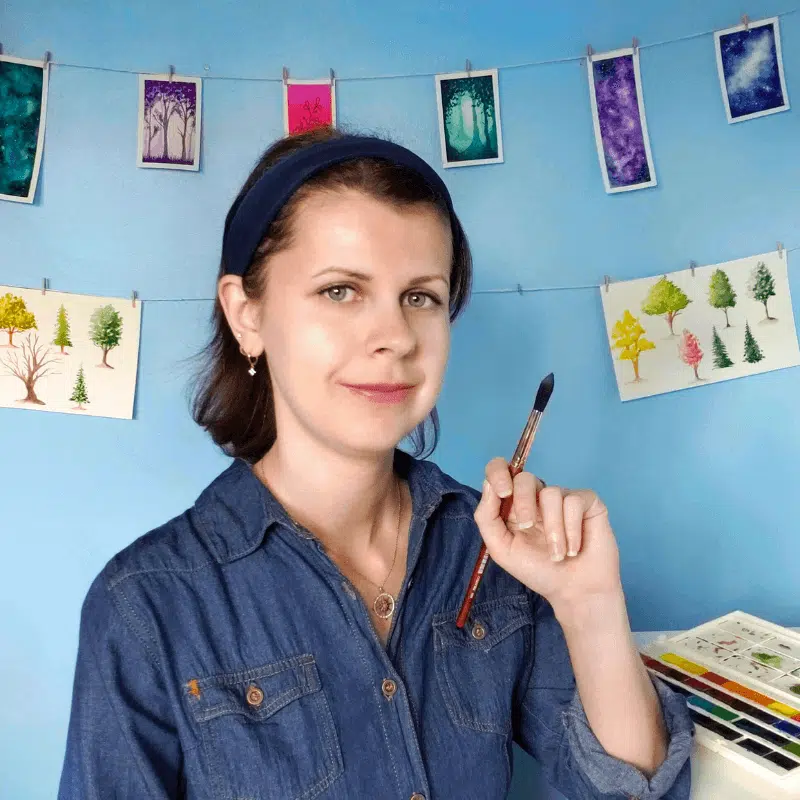
Miranda Balogh
Artist & Online Educator






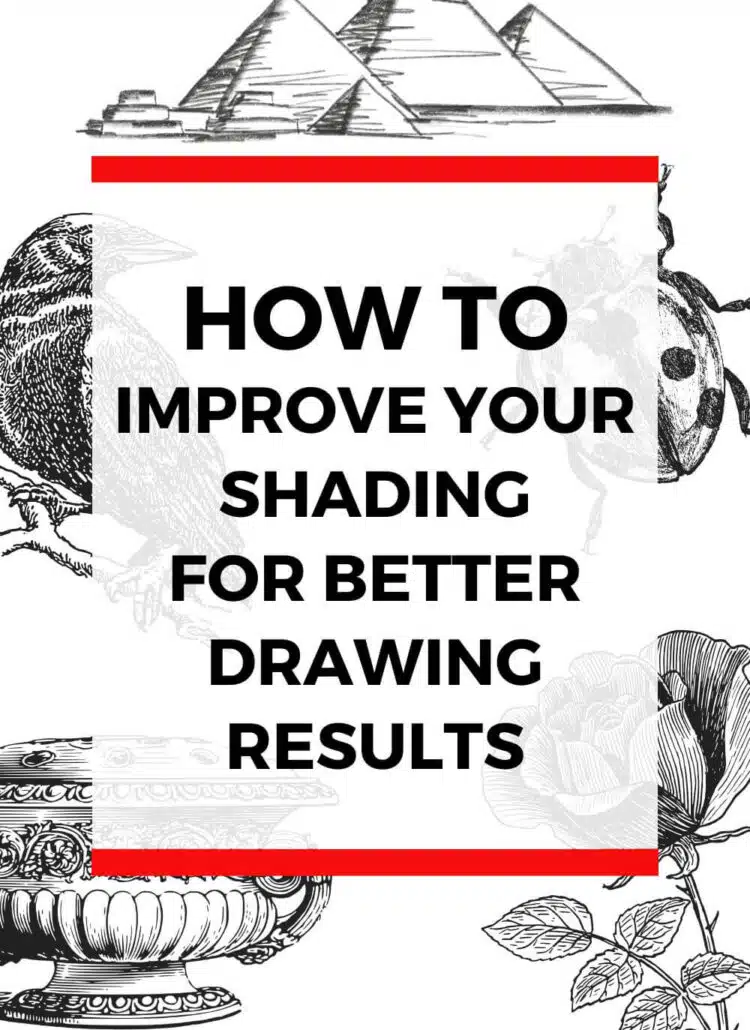
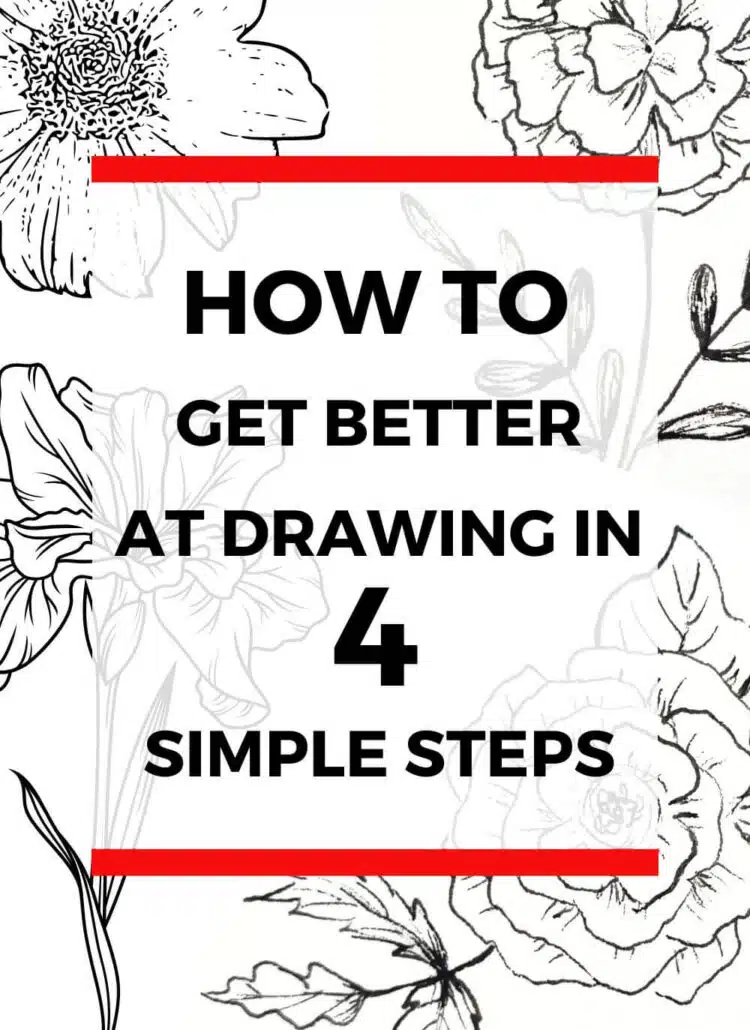

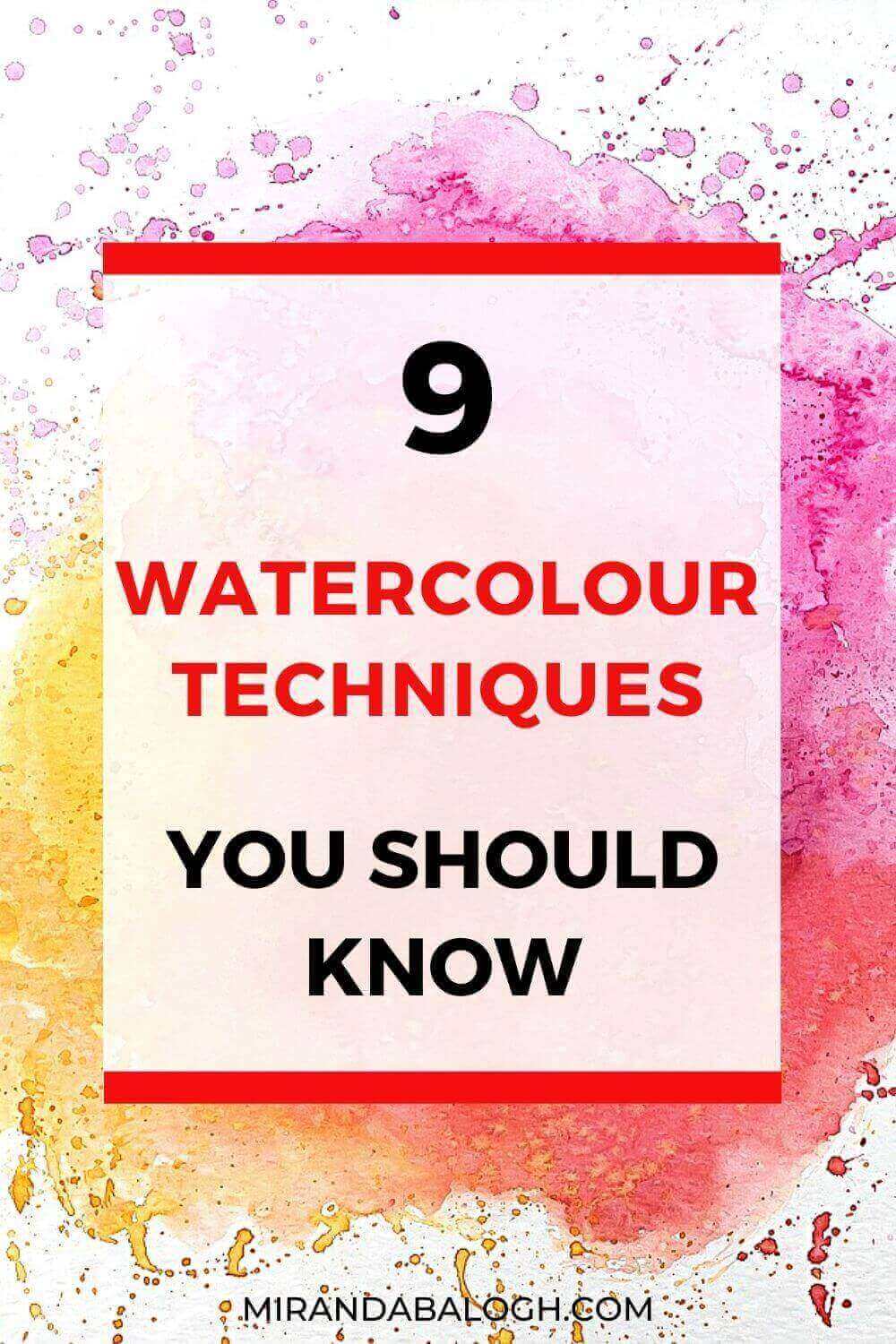
Great tips. Quality matters!
Thank you! Agreed, good quality can make a world of difference!
Thanks a lot for your advice! The post is really helpful. I love learning and improving my creativity skills!
You’re welcome! I’m glad that this post has helped you.
Thank you for this! Great tips!!! Going to implement a few
Glad to hear that you found these watercolour tips useful.
Love the tip about using a hairdryer to speed up the process… Being as impatient as I am. LOL
Great post, thanks for sharing.
Using a hairdryer can be such a time saver, so I highly recommend using it to dry your watercolour paintings. Thanks for commenting!
Thanks for your guidance and tips. I am an beginner in watercolour and always make mistakes in over doing it. Do not know right amount of water to mix. Article will be very helpful.
I’m so glad you found this article helpful! As you continue to practice the paint to water ratio, your watercolour paintings will just get better and better. Have fun painting and improving your skills!
Such great tips!! Thanks for sharing! I’m no artist but I do love art and try different things! I’m sure i’m using the wrong paper and brushes and everything!! But having fun when I try!!
As long as you keep trying and having fun, that’s all that really matters. Thanks for sharing!
It’s good to know that you should use the right paper. My sister is wanting to learn how to paint with watercolors. I’ll make sure to pass these tips along to her once she starts learning how to use watercolors.
Yes, using the right watercolour paper makes a world of difference! And I hope your sister finds these watercolour tips useful.
Just want to give you a huge thank you, for taking the time to help fellow artists. I am on Disability and cannot afford to take courses. The free tips are so helpful for people in my position and if I ever reach a level to be able to help others, you can be sure that you have lead by example. So thank you , thank you, thank you!!! You are appreciated!!!
Thank you so much for your kind and lovely words! I’m glad that you find these free watercolour tips useful, and I’m always happy to help fellow artists such as yourself.
This was a wonderful post!! Answered so many of my questions that I have been pondering and searching for! Thank you soo much!! God bless!
You’re welcome! I’m glad to hear that this article has helped you find the answers you’re looking for.
Thanks for your pieces of advice. I’ll begin next week with my first class so I´ll take all I´ve read into account!! Thanks a lot!
You’re welcome! Good luck with your first watercolour class.
Your tips are so helpful and instructive. I have been painting in watercolour for 5 years,self taught and now confident enough to have just submitted some work to an exhibition. I have committed all the mistakes you have highlighted many times but with persistence have come through and have sold quite a number of paintings. I don’t aspire to your level but am trying to improve my technique and get a lot of inspiration from yourself and others of a similar ilk Many,many thanks for your help and priceless tips. You are super.
Wow, you’ve accomplished so much on you watercolour journey! Kudos to you! And thanks, I’m glad you found these tips helpful.
I am fairly new to this genre and appreciate your advice.
I made three of the mistakes in your list.
Thank you and I will keep on trying!
Now that you’ve identified some of your mistakes, you know exactly how to fix them. So, your watercolour paintings are going to get better and better the more you keep learning and trying!
Thanks ,most of my wrong doings are addressed and can’t wait to implement your tips…
I am an architect,but have gone back to my school hobby….and I understand water Color painting is a tough medium to master…thx anyway…God bless you.
I’m glad you found this article helpful. Thanks for sharing!
I started watercolor years ago. One of the tips my instructor gave me was to run the watercolor paper under water to remove the sizing on it. They were huge sheets. And then you blow dry the paper. But I don’t even know if they still make that paper anymore. That was probably 12 years ago when I lived in California. My instructor was great!
Hi Barbara!
Your instructor gave you a great tip! I tend to work on medium to small pieces of watercolour paper, but I’ve never tried running the paper under water to remove the sizing. Maybe I’ll give it a shot and see what happens.
Thank you for sharing your tip!